Community articles — Posters
Showcase your work at conferences, class presentations, or university open days with these eye-catching LaTeX poster templates. Switch between landscape or portrait, A0, A1, A2, A3, and A4 size posters.
Recent
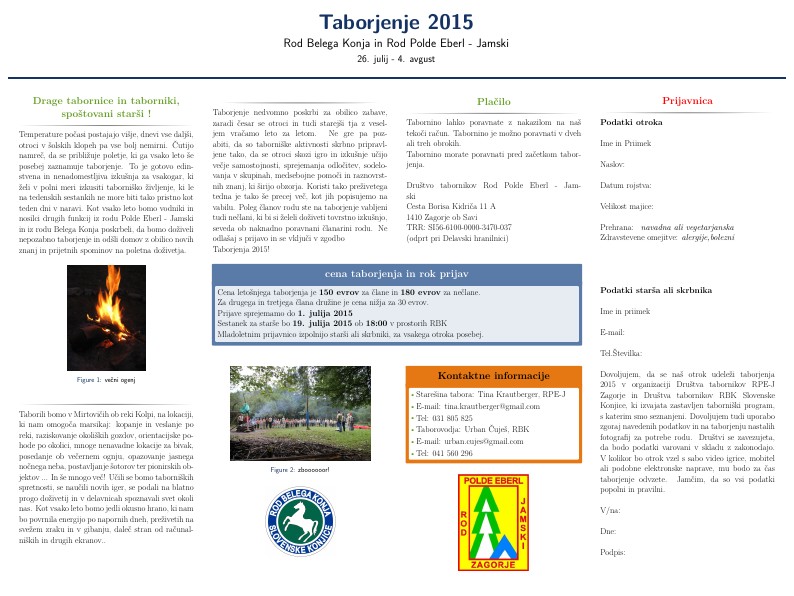
Taborjenje 2015 This template has been downloaded from: http://www.LaTeXTemplates.com License: CC BY-NC-SA 3.0 (http://creativecommons.org/licenses/by-nc-sa/3.0/)
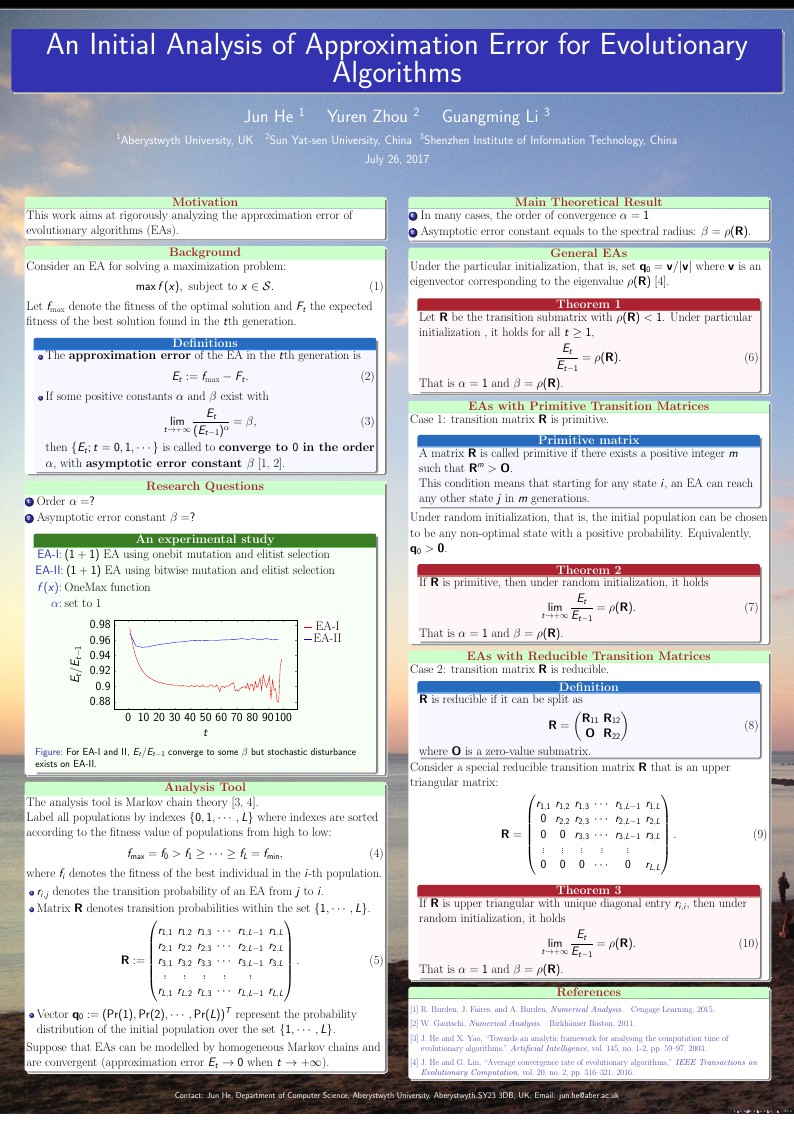
Author: Jun He This file may be distributed and/or modified under the LaTeX Project Public License and/or under the GNU Public License.
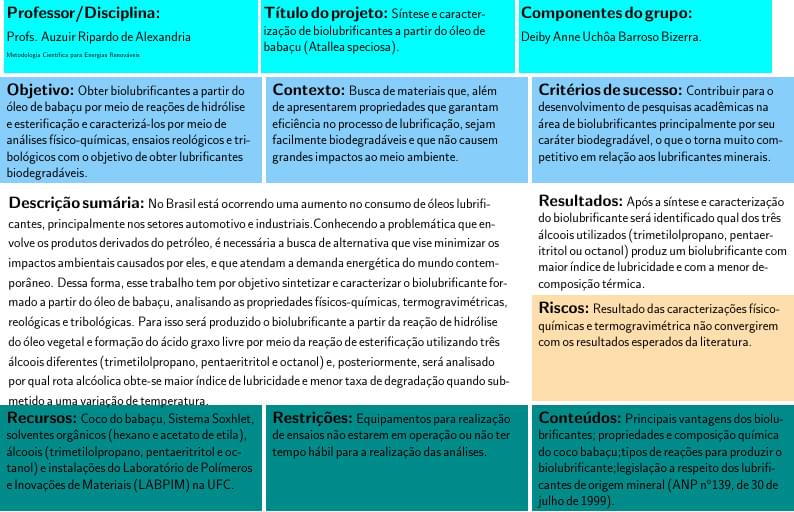
Trabalho 4 - Metodologia Científica
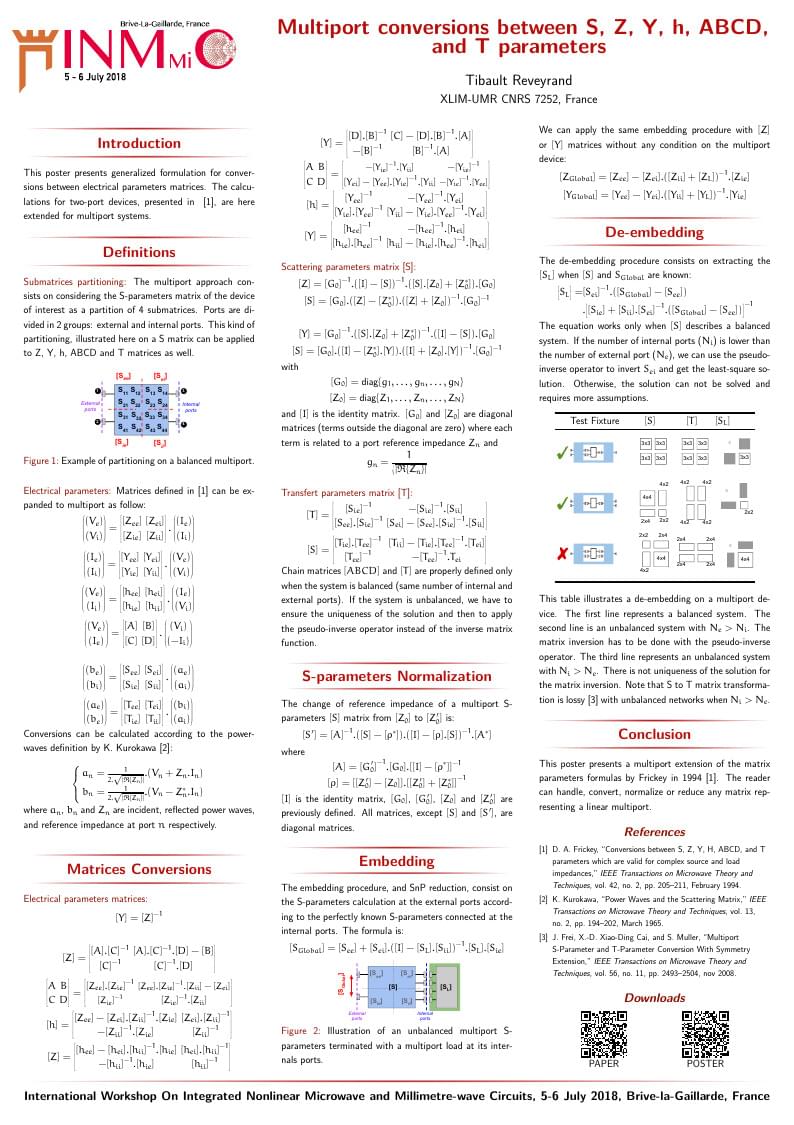
«Multiport conversions between S, Z, Y, h, ABCD, and T parameters.» Integrated Nonlinear Microwave and Millimetre-wave Circuits (INMMIC 2018), Brive-la-gaillarde, France, July 2018. Article: http://www.microwave.fr/publications/151.pdf Poster: http://www.microwave.fr/publications/151p.pdf

Evaluating Scalability for Complex Event Processing in the Context of Smart Cities
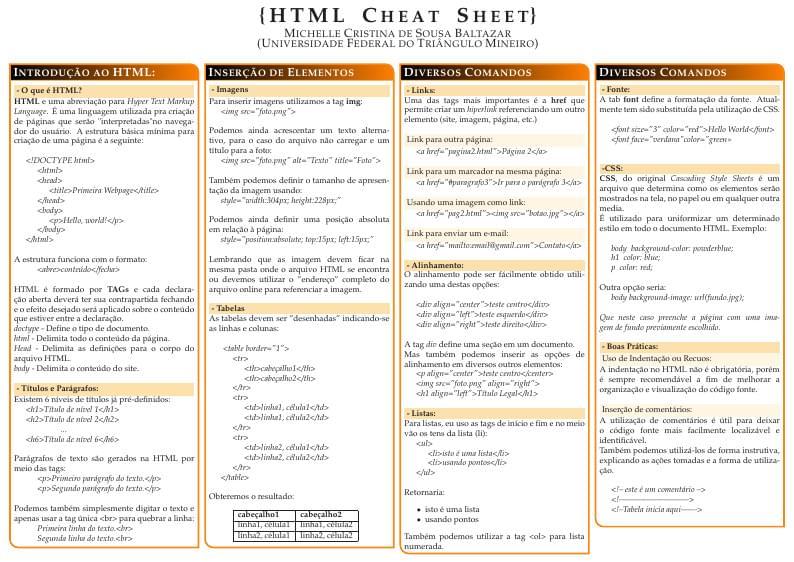
HTML Cheat Sheet Edited by Michelle Cristina de Sousa Baltazar baposter Landscape Poster This template has been downloaded from: http://www.LaTeXTemplates.com
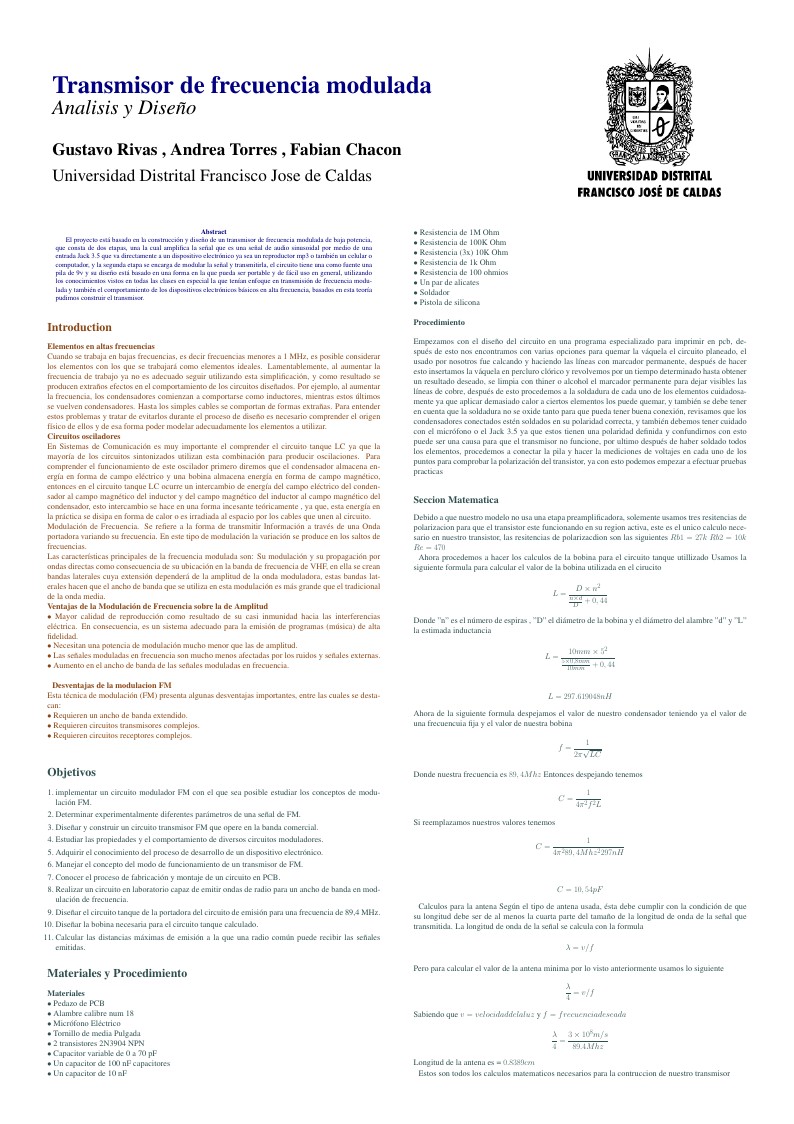
El proyecto está basado en la construcción y diseño de un transmisor de frecuencia modulada de baja potencia, que consta de dos etapas, una la cual amplifica la señal que es una señal de audio sinusoidal por medio de una entrada Jack 3.5 que va directamente a un dispositivo electrónico ya sea un reproductor mp3 o también un celular o computador, y la segunda etapa se encarga de modular la señal y transmitirla, el circuito tiene una como fuente una pila de 9v y su diseño está basado en una forma en la que pueda ser portable y de fácil uso en general, utilizando los conocimientos vistos en todas las clases en especial la que tenían enfoque en transmisión de frecuencia modulada y también el comportamiento de los dispositivos electrónicos básicos en alta frecuencia, basados en esta teoría pudimos construir el transmisor.
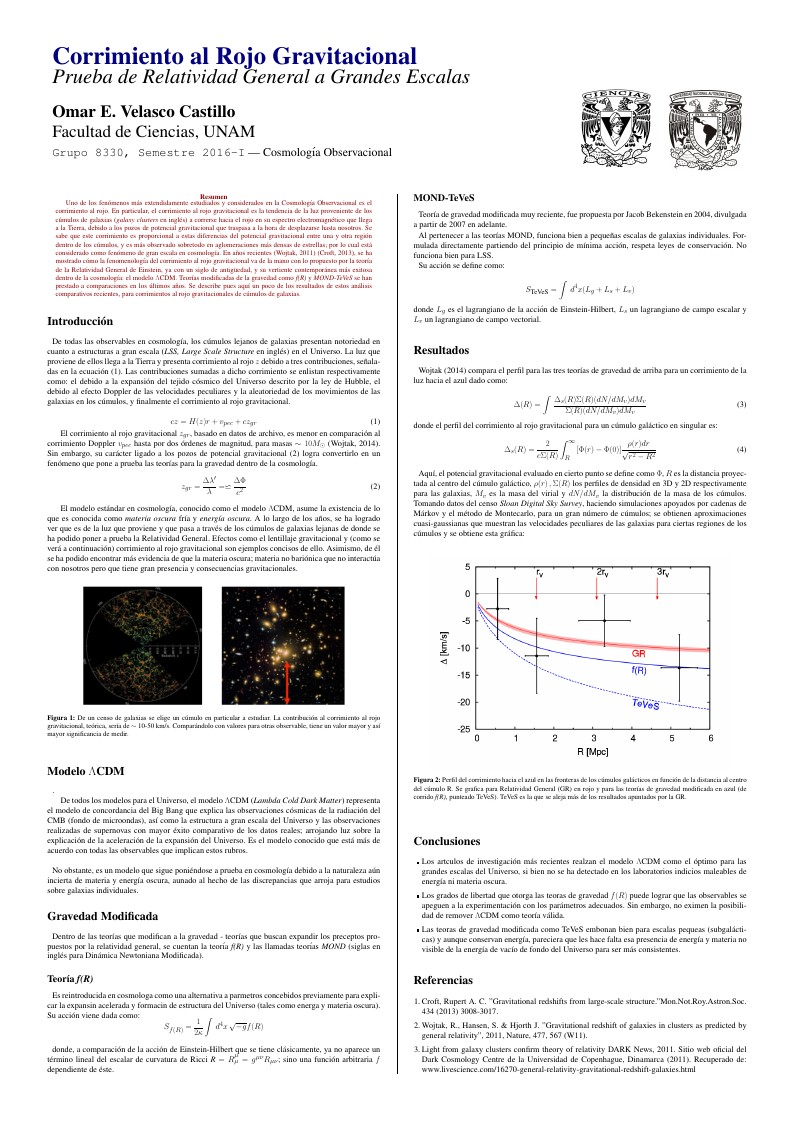
Uno de los fenómenos más extendidamente estudiados y considerados en la Cosmología Observacional es el corrimiento al rojo. En particular, el corrimiento al rojo gravitacional es la tendencia de la luz proveniente de los cúmulos de galaxias (galaxy clusters en inglés) a correrse hacia el rojo en su espectro electromagnético que llega a la Tierra, debido a los pozos de potencial gravitacional que traspasa a la hora de desplazarse hasta nosotros. Se sabe que este corrimiento es proporcional a estas diferencias del potencial gravitacional entre una y otra región dentro de los cúmulos, y es más observado sobretodo en aglomeraciones más densas de estrellas; por lo cual está considerado como fenómeno de gran escala en cosmología. En años recientes (Wojtak, 2011) (Croft, 2013), se ha mostrado cómo la fenomenología del corrimiento al rojo gravitacional va de la mano con lo propuesto por la teoría de la Relatividad General de Einstein, ya con un siglo de antigüedad, y su vertiente contemporánea más exitosa dentro de la cosmología: el modelo ΛCDM. Teorías modificadas de la gravedad como f(R) y MOND-TeVeS se han prestado a comparaciones en los últimos años. Se describe pues aquí un poco de los resultados de estos análisis comparativos recientes, para corrimientos al rojo gravitacionales de cúmulos de galaxias.
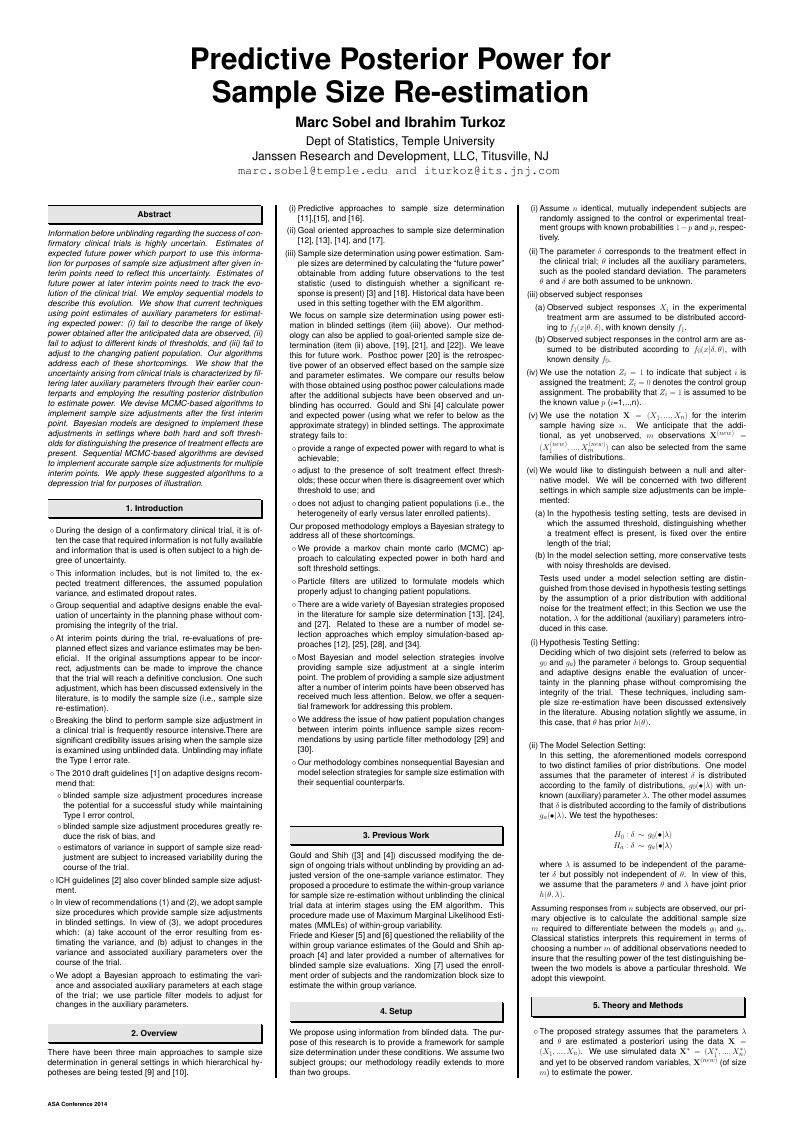
Information before unblinding regarding the success of confirmatory clinical trials is highly uncertain. Estimates of expected future power which purport to use this information for purposes of sample size adjustment after given interim points need to reflect this uncertainty. Estimates of future power at later interim points need to track the evolution of the clinical trial. We employ sequential models to describe this evolution. We show that current techniques using point estimates of auxiliary parameters for estimating expected power: (i) fail to describe the range of likely power obtained after the anticipated data are observed, (ii) fail to adjust to different kinds of thresholds, and (iii) fail to adjust to the changing patient population. Our algorithms address each of these shortcomings. We show that the uncertainty arising from clinical trials is characterized by filtering later auxiliary parameters through their earlier counterparts and employing the resulting posterior distribution to estimate power. We devise MCMC-based algorithms to implement sample size adjustments after the first interim point. Bayesian models are designed to implement these adjustments in settings where both hard and soft thresholds for distinguishing the presence of treatment effects are present. Sequential MCMC-based algorithms are devised to implement accurate sample size adjustments for multiple interim points. We apply these suggested algorithms to a depression trial for purposes of illustration.
\begin
Discover why over 20 million people worldwide trust Overleaf with their work.